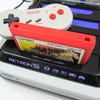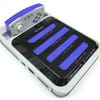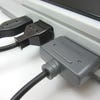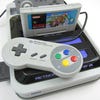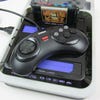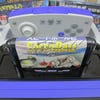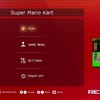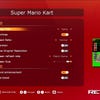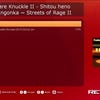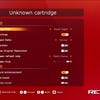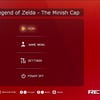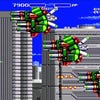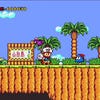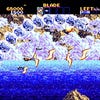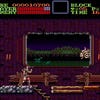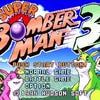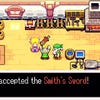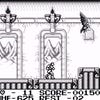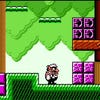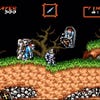Hyperkin Retron 5 review
Five retro consoles in one - with pin-sharp HDMI support. Digital Foundry investigates.
In the rapidly maturing clone console market, the Retron 5 has become something of a legend. Announced amid great fanfare last year, this wonder system promised compatibility with a staggering number of vintage formats - NES, SNES, Mega Drive, Famicom, Game Boy, Game Boy Color, Game Boy Advance and Master System (the latter requiring the Sega Power Base Converter) - as well as technological advancements such as upscaled 720p output, image filters, save states and a wireless controller. Christmas 2013 was the proposed release window, but a manufacturing fault forced creator Hyperkin to push the machine into 2014 - yet for most of this year the company has remained ominously silent regarding any solid launch date.
Late last month, Hyperkin confirmed that the Retron 5 would finally be hitting store shelves in North America on 6th June, bringing to an end a journey which has taken much longer than anticipated and has consequently allowed rival Retro-Bit to get its own unit - the Super Retro Trio - to market well in advance. Thankfully, the lost time means little; despite some niggles, the Retron 5 is a far superior machine to its direct competitor, or indeed any "all in one" clone console released thus far.
In purely physical terms, however, it's largely business as usual. Clone consoles are rarely constructed to the same standard as the hardware they imitate, and the Retron 5 doesn't buck the trend in this respect. The plastic feels cheap and slightly nasty, and the top of the unit - where the cartridge slots reside - is covered by a shiny black section of plastic that feels like it's going to snap when you're attempting to insert and remove games and collects scuffs with worrying regularity.
Despite the considerable size of the unit, it doesn't weigh much - in fact, the rear section of the Retron 5 could have been removed entirely as it's only there to provide a docking platform for the wireless pad when it's not in use. It doesn't even charge the pad's battery - for that, you plug the bundled micro-to-mini USB cable into the back of the console and connect it to the controller. The back of the system also has the HDMI output, SD card slot and power socket. Hyperkin has kindly included a multi-voltage power supply with interchangeable plugs, so it's possible to use this system almost anywhere in the world.
The wireless pad is better than we were expecting - given the traditionally abysmal quality of the controllers which come bundled with clone systems - but it's still a long way from being perfect. The buttons emit a horrible clicking noise when pressed, but are otherwise quite responsive. The micro-switched joystick is likely to divide players; while it draws favourable comparisons with the stick seen on SNK's Neo Geo CD pad and its Neo Geo Pocket handheld, it doesn't feel as sturdy and isn't well suited for games which require precise movement commands.
"Clone consoles are rarely constructed to the same standard as the hardware they imitate, and the Retron 5 doesn't buck the trend in this respect. The plastic feels cheap and slightly nasty."
The two massive shoulder buttons are uncomfortable to use, and the design of the pad itself is something of an ergonomic nightmare - it's like a boxy NES controller, but with two sections at the bottom which push outwards, presumably so the pad rests more comfortably in your hands. It's not a complete disaster by any means, but you'll be thankful that the Retron 5 supports original gamepads - there are two ports apiece for the Mega Drive, SNES and NES, but you'll have to keep the wireless pad close at hand as it's the only option for accessing the console's "Home" menu and toggling settings.
With so many controller ports on offer, it should come as no great surprise to learn that the Retron 5 is capable of hosting multiple players in games which support such a feature. For example, Super Bomberman 3 on the SNES allows for up to five players in its Battle Mode, a feat that would have required the additional purchase of a multi-tap accessory on the original hardware. On the Retron 5, all you have to do is drop into the settings and assign each player to a particular controller port on the system. Although we were unable to test it due to lack of software, it's safe to assume that the same process can be applied to multiplayer games on the NES and Mega Drive, too.
Although Hyperkin has kept its cards close to its chest when it comes to explaining exactly how the Retron 5 works, the moment you boot up the console and navigate its menu system it becomes abundantly clear that the hardware is running a heavily modified version of Google's Android OS. The on-screen keyboard - which appears when you need to input text - is the biggest giveaway; it's identical to the one introduced in Android 4.0, and the familiar swirling loading circle makes an appearance too. As was previously rumoured, the Retron 5 isn't your typical clone system - it's basically an Android-based device that uses emulators to replicate the performance of retro platforms. When you load up a game, the ROM is dumped into the console's memory, where it resides until you yank the cartridge out again (speaking of which, the cartridge ports are uncommonly tight, so be prepared to wrestle with the machine in order to extract them).
And here we come to perhaps the most important aspect of the Retron 5 - its ability to accurately play software from the past 30 years. Although emulation is clearly used, overall performance is faultless. All of the games we tested played exactly as they do on their original host hardware, right down to the various imperfections of the era - such as bouts of slowdown on SNES action titles and sprite flicker on NES games. Territory lock-outs aren't an issue here, as the console automatically switches to the appropriate region when the game is booted up. You can even toggle between regions if you so wish, as well as force a 50 or 60Hz setting.
"The Retron 5 isn't your typical clone system - it's basically an Android-based device that uses emulators to replicate retro platforms."
Taking the emulation approach will surely have purists up in arms, but it offers several notable advantages. The most obvious is drastically improved image quality; whereas the best previous clone systems could muster was s-video or composite, the Retron 5 outputs a glorious 720p HD image via the bundled HDMI cable. Software is displayed at the original resolution of the host hardware before being upscaled by the Retron 5, and the results are fantastic - easily matching the visual clarity seen on the Wii U's Virtual Console.
The next big addition is the ability to apply filters to the image, such as emulator favourites Super Eagle and Scale2x. You can also turn on authentic CRT-style scanlines, something which will no doubt come as a massive bonus to those who want their retro games to look exactly like the screenshots which graced the pages of Mean Machines and Computer and Video Games back in the early 90s, when reviewers like our very own Richard Leadbetter had to physically take a photo of a paused screen in a darkened room in order to capture a static image.
Save states are another welcome luxury, allowing you to retain your progress even in games that lack battery back-up. In a neat touch, the Retron 5 automatically creates a save state the moment you remove the cartridge, and restores the game from that point the next time you load it up. The final plus point is the ability to fast forward the game you're playing by pressing the top-right button on the wireless pad - a curious feature to those not accustomed to emulation, but one which comes in handy more often than you might otherwise expect.
Digging deep into the Retron 5's user interface reveals a surfeit of other options, too. Using an SD card, it's possible to load up cheats for certain titles and save screenshots. Audio bass and treble is adjustable, while controller customisation extends to creating unique profiles with different button arrangements. This means you can play the SNES version of Street Fighter 2 with the (arguably superior) Mega Drive six-button pad, or the Mega Drive edition of Street Fighter 2: Special Championship Edition with the SNES controller, depending on your preference. Firmware updates are also possible thanks to the SD card slot, meaning that the console is, to a certain extent, future-proof - Hyperkin has the option to issue new features and fixes without having to recall units or change its production routine.
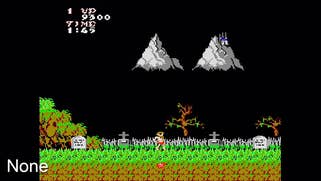
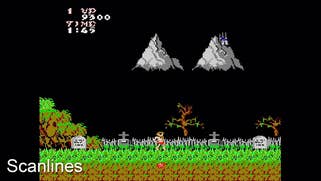
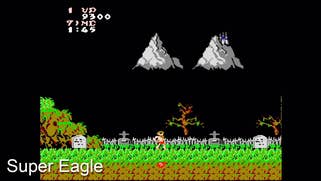
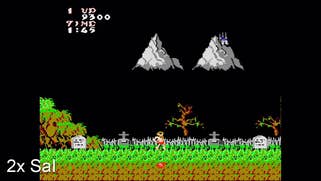
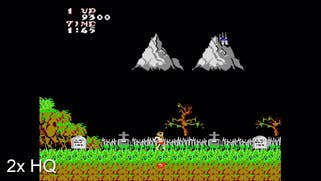

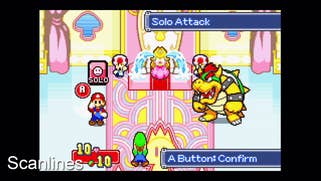

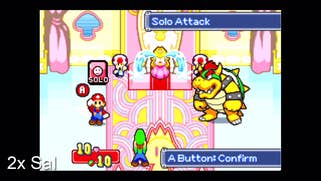
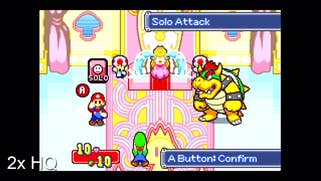
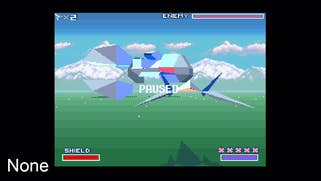
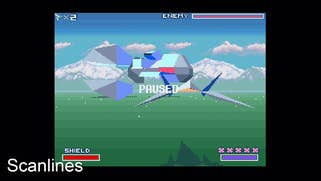
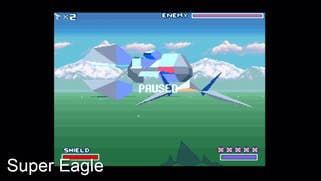
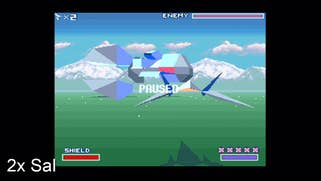
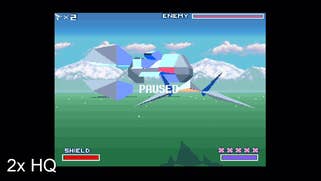
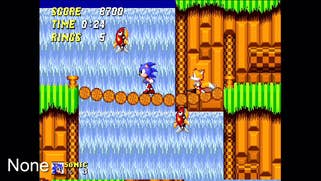

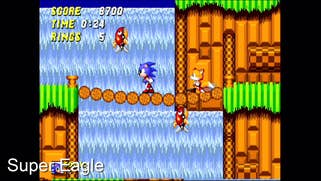
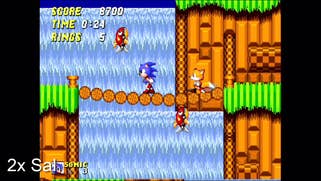
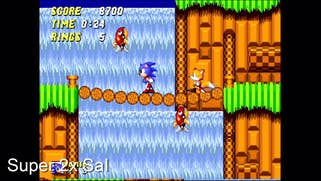
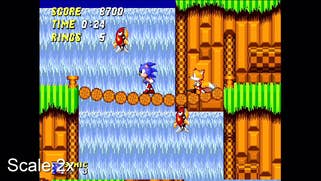
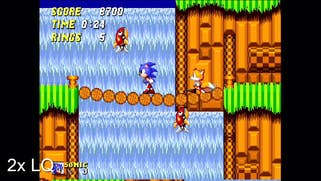
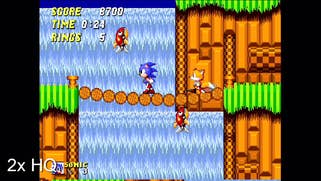
Fixes will almost certainly come, because the Retron 5 isn't quite perfect. One of the most hyped features - the ability to download save games from existing carts into the console's memory, and back again - doesn't work as planned. We tried several games with battery back-up saves and upon loading them into the Retron 5, the machine proceeded to wipe the cartridge entirely, instantly destroying save games which - in some cases - were forged well over a decade ago. The process of pushing the save back to the cartridge is also questionable - an error message was displayed in our case, and despite several additional attempts, a successful transfer could not be achieved. It's a shame that this is the case, because this feature could be a genuine lifesaver for retro enthusiasts with games that have batteries that are close to dying, and wish to conserve their progress for posterity. Of course, the presence of save states mitigates this problem to a degree, but won't come as much consolation to those who have lost years of data thanks to the Retron 5 wiping the memory of their games clean.
Another issue involves games not being recognised properly 100 per cent of the time; the console has an built-in database of names and helpfully tells you what title you've loaded up, but often it would display an "unknown cartridge" message, even though the very same game had been played only minutes previously. This could well be down to dusty or dirty cartridge connections - after all, some of the games we tested are well over two decades old - but it happened so often that we're not totally sure that is the case.
Compatibility is also a worry; while the Retron 5 was able to handle chip-enhanced titles like Super Mario Kart and Star Fox without any issues, it steadfastly refused to run the Famicom game Akumajō Densetsu (better known in the west as Castlevania 3: Dracula's Curse), instead displaying a message claiming the ROM dump had failed. We obviously couldn't test every single game, but like all clone hardware, it's unreasonable to expect total compatibility with all titles. Having said that, out of the many games we tested, Akumajō Densetsu was the only one that failed to load.
Despite all those lovely cartridge slots, it's impossible to play the Retron 5 with more than one game inserted at once - another rather curious niggle which will hopefully be remedied in the future, as it seems a bit of a waste - not to mention an inconvenience - to have those ports unoccupied. As far as problems go, you could argue that those covered here are pretty minor - and there's an excellent chance they will be patched in a future firmware update - but all the same, their existence does take the shine off what is an otherwise excellent package.
"There are some compatibility worries, though chip-enhanced titles like Super Mario Kart and Star Fox worked without issue."
It's also worth mentioning that modern flash cartridges - allowing the use of ROMs on classic consoles such as the SNES, Mega Drive and NES - aren't compatible with the Retron 5. However, given the system's Android foundation and the inclusion of that all-important SD card slot, it will surely only be a matter of time before industrious hackers find a way of running ROMs from removable media. For the time being though, the console will appeal to those who wish to leverage their existing collection of cartridges, rather than those who are merely seeking another way to play the massive selection of ROMs they've downloaded from the internet.
Hyperkin Retron 5: the Digital Foundry verdict
After years of merely providing a cheap and viable solution for that fateful moment when your existing retro console bites the dust, clone systems have at last come of age with the Retron 5. This isn't just an inexpensive way to replace ageing or decrepit hardware; it offers an experience which is, in many ways, far superior to that seen on the original machines. Upscaled 720p HD output, save states, image filters and much more reside within the Retron 5's admittedly cheap casing, and while the bundled wireless pad could have been better, it doesn't dent your enjoyment as you can easily hook up your old controllers for the authentic feel.
The problems that exist are irksome, but they're not deal breakers. Build quality could be better, and there are clearly aspects of the system's software that require additional work. You may wish to keep your treasured copies of Pokémon Red and The Legend of Zelda: A Link to the Past away from the Retron 5 until Hyperkin is able to completely sort out the save data transfer procedure, but if you're not concerned with losing saves (or if you're starting from scratch) the save state feature is arguably better than any battery back-up alternative, as it allows you to pause and resume from any place in the game - Nintendo has employed a similar system on its Wii U and 3DS Virtual Console releases. In this respect, the Retron 5 could provide salvation for those carts consigned to the scrapheap due to dead internal batteries, effectively giving them a new lease of life despite their inability to retain save data.
Hyperkin has managed to create a clone system actually worth investing in even if your collection of vintage hardware is still in perfect working order, and has finally provided retro gamers with a way of enjoying their games on HD television sets without them looking soupy and ill-defined. Its reliance on original carts makes it more suited to existing collectors rather than absolute newcomers, but given how cheaply unboxed games can be purchased these days, we imagine that many retro gaming novices will have a lot of fun acquainting themselves with the past via this excellent - if slightly flawed - device.
The Retron 5 launches in North America on June 6th. UK pre-orders can be placed with FunStock.co.uk.


